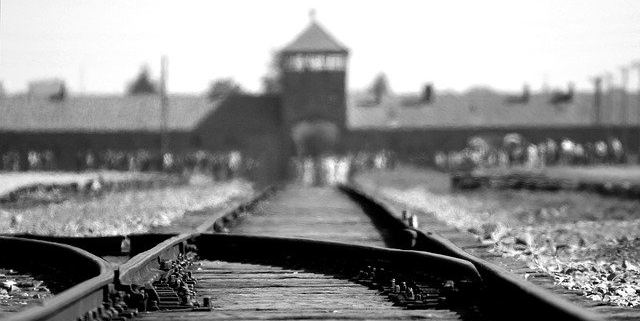Auschwitz-Birkenau Museum in Oświęcim. Concentration camp or hell?
Thinking about hell, we have before our eyes biblical visions of the place of execution where people go for their sins. They are tortured and the punishment is endless. When entering the area of the former German concentration and extermination camp Auschwitz-Birkenau, one can get the impression that for several years hell was located in this place. Famine, medical experiments, terror, superhuman work, diseases, executions, gas chambers, cyclone B – all this was brought by Poles, Jews, Roma and representatives of other nations. A visit to the Auschwitz Memorial and Auschwitz-Birkenau State Museum in Oświęcim is not an ordinary trip. Visiting the camp evokes memories of those events, genocide and the Holocaust, and the cruelty that took place here causes chills. It also gives a lot to think about.
German Nazi concentration and extermination camp in Oświęcim
The idea to set up the camp appeared at the end of 1939, and the choice of Auschwitz – as the Germans called Oświęcim – resulted from convenient rail connections and the buildings of the former barracks located there. The official date of starting the camp is June 14, 1940, when the first mass transport to Auschwitz took place. On this day, 728 political prisoners were brought from the Tarnów prison by train wagons – they were Poles and several Polish Jews. Initially, political prisoners, the Polish intelligentsia and the opposition were to be detained in this camp.
In 1942, the Auschwitz II (Birkenau) camp was commissioned in the village of Brzezinka (German name Birkenau) 3 km from Oświęcim. It was the largest of the entire complex and was part of the Nazi plan to murder Jews living in the territories occupied by the Third Reich. It quickly became the largest German extermination camp and it was here that most of the victims of Auschwitz died.
In addition to the two main camps, in 1942-1944 more than 40 sub-camps (Auschwitz III) were established, in which the slave labor force of prisoners was used. They were created mainly at German industrial plants, as well as agricultural and breeding farms.
The camp was liberated on January 27, 1945, and in 1947 Auschwitz I and II was transformed into the Auschwitz-Birkenau State Museum in Oświęcim. In 1979, the grounds of the former camp within the boundaries of the museum were inscribed on the UNESCO World Heritage List, which indicates the timeless and universal significance of the place. This is the only item of this type inscribed on the list to represent other genocide sites.
How many people died in the Auschwitz-Birkenau concentration and extermination camp?
This question is difficult to answer, because in August 1944, the Germans began liquidating the camp, blurring crime certificates and burning documents. At present, it is assumed that at least 1,300,000 people were deported to Auschwitz, including:
- 1,100,000 Jews,
- 140,000-150,000 Poles,
- 23,000 Roma,
- 15,000 Soviet prisoners of war,
- 25,000 prisoners of other nationalities.
Of the 1,100,000 people who died in Auschwitz, 90% were Jews. Most of them died as soon as they arrived, getting to the gas chambers. At the time of liberation, there were about 7,000 people in the camp.
What does visiting the former Nazi concentration and extermination camp Auschwitz-Birkenau look like in Oświęcim?
If you don’t come with an organized group, there are several sightseeing options to choose from. The most popular of them are: individual tours without an educator and general tours.
Individual tours without an educator
Individual tours without an educator in the April-October period are only possible early in the morning and after peak hours. New regulations were introduced in 2018 due to the growing number of visitors to the camp. Admission is free and it is best to book the entrance card in advance via the Museum’s website.
General tour (with educator)
A general tour with the educator lasts about 3.5 hours. It seems to be the best option if you want to know the history of the camp and the dramatic events that took place there. In order not to miss anything, each of the entrants receives headphones, and then, along with the educator (guide) enters the Auschwitz I.
A visit to the Auschwitz concentration camp
Like prisoners, we cross the gate with the inscription “Arbeit macht frei” above it (Work makes you free). It is one of the symbols of the camp and the suffering of millions of lives. Brick camp barracks in front of which are now themed exhibitions. In them, we learn about the lives of prisoners, from the moment they cross the gate to cremation. From the pictures hung on the walls people who got to this hell look at us. Everything was taken from them, even their full name. Heaps of suitcases, prostheses, cosmetics and cut hair make a great impression.
We stop for a moment between barracks 10 and 11. The wall where flowers are laid and candles are lit, was the place where prisoners were shot. The last point of the visit to Auschwitz I is the entrance to the gas chamber and crematorium. On the walls of the chamber, you can still see the fingerprints of people looking for an escape route from Cyclone B. We learn from the educator that their agony lasted from a few seconds to 20 minutes.




